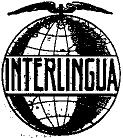
Latino sine flexione
Latino sine flexione ("Latin without inflections"), Interlingua de Academia pro Interlingua (IL de ApI) or Peano's Interlingua (abbreviated as IL) is an international auxiliary language compiled by the Academia pro Interlingua under the chairmanship of the Italian mathematician Giuseppe Peano (1858–1932) from 1887 until 1914. It is a simplified version of Latin, and retains its vocabulary. Interlingua-IL was published in the journal Revue de Mathématiques in an article of 1903 entitled De Latino Sine Flexione, Lingua Auxiliare Internationale (meaning On Latin Without Inflection, International Auxiliary Language),[2] which explained the reason for its creation. The article argued that other auxiliary languages were unnecessary, since Latin was already established as the world's international language. The article was written in classical Latin, but it gradually dropped its inflections until there were none.
Not to be confused with Interlingua.Latino sine flexione
['latino 'sine 'fleksione]
Academia pro Interlingua under chairmanship of Giuseppe Peano
1887–1914[1]
-
Italic, Auxiliary language
- Latino-Faliscan, A posteriori language
- Latin, Controlled language
- Latino sine flexione
- Latin, Controlled language
- Latino-Faliscan, A posteriori language
Based on Latin, but influenced by ideas in other auxiliary languages
Academia pro Interlingua (-1945), works by Peano and ApI (eg Discussiones 1909-1915)
None (mis)
None
la-peano
History[edit]
In 1903, Peano published the article De Latino Sine Flexione to introduce his language.[2] In this work, Peano quoted a series of suggestions by Leibniz about a simplified form of Latin.[4][5] The article appeared to be a serious development of the idea, and Peano subsequently gained a reputation among the auxiliary language movement.
In 1904, Peano undertook an essay about the way to obtain the minimal grammar of an eventual minimal Latin (Latino minimo), with a minimal vocabulary purely international.[6]
Peano and some colleagues published articles in Latino sine flexione for several years at the Revue de Mathématiques. Because of his desire to prove that this was indeed an international language, Peano boldly published the final edition of his famous Formulario mathematico in Latino sine flexione. However, as Hubert Kennedy notes, most mathematicians were put off by the artificial appearance of the language, and made no attempt to read it.[7]
In October 1907, Peano was at the Collège de France in Paris to take part in the Delegation for the Adoption of an International Auxiliary Language. Having declared for Latino sine flexione to be adopted, he eventually could not participate in the final voting, because of labour affairs at Turin.[8]
On 26 December 1908, Peano was elected member and director of the Akademi internasional de lingu universal still using Idiom Neutral, which was refounded one year later under the name Academia pro Interlingua. Every academician might use their favourite form of Interlingua, the term being initially used in a general sense as a synonym for international language, yet it soon began to be specially used to denote a reformed Latino sine flexione based on the common rules the academicians were reaching by frequent votings. Thus, the name Interlingua soon began to denote the language evolving from the Academia Pro Interlingua,[7] with the corresponding abbreviation IL.
However, every member was free to write in their own personal style, and indeed some members were proposing radical reforms which eventually might end up as independent languages (like Michaux's Romanal or De Wahl's Interlingue). For this reason, the name Peano's Interlingua or Interlingua (IL)[7] might be regarded as the most accurate for the particular standard by Peano. (As found in "Interglossa and its predecessors".[9])
The discussions to reach a standard Interlingua may be seen on the pages of Discussiones, the official journal of the Academia pro Interlingua from 1909 to 1913. This and subsequent journals of the academy have been recently published in a CD-Rom by the mathematics department of the University of Turin,[10] the place where Peano developed his teaching and research.
Since De Latino Sine Flexione had set the principle to take Latin nouns either in the ablative or nominative form (nomen was preferred to nomine), in 1909 Peano published a vocabulary in order to assist in selecting the proper form of every noun,[11] yet an essential value of Peano's Interlingua was that the lexicon might be found straightforward in any Latin dictionary (by getting the thematic vowel of the stem from the genitive ending, that is: -a -o -e -u -e from -ae -i -is -us -ei).
Finally, a large vocabulary with 14,000 words was published in 1915.[12]
A reformed Interlingua was presented in 1951 by Alexander Gode as the last director of the International Auxiliary Language Association. It was claimed to be independent from Peano's Interlingua, because it had developed a new method to detect the most recent common prototypes. But that method usually leads to the Latin ablative, so most vocabulary of Peano's Interlingua would be kept. Accordingly, the very name Interlingua was kept, yet a distinct abbreviation was adopted: IA instead of IL.
According to Peano's guide to the language in 1931, "most Interlinguists are in favour of the old Latin pronunciation." This gives the pronunciation of vowels as follows:
Consonants are pronounced largely as in English, with the following clarifications:
Not all consonants and vowels are pronounced distinctively by all people. The following variant pronunciations are allowed:
The stress is based on the classical Latin rule:
A secondary accent may be placed when necessary as the speaker deems appropriate.